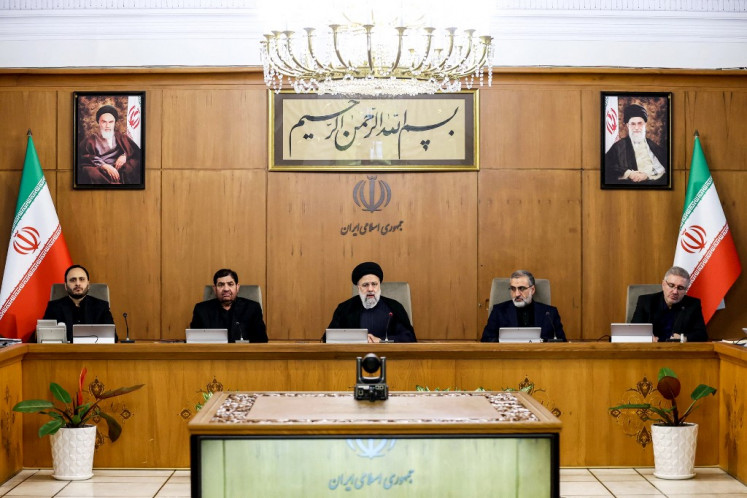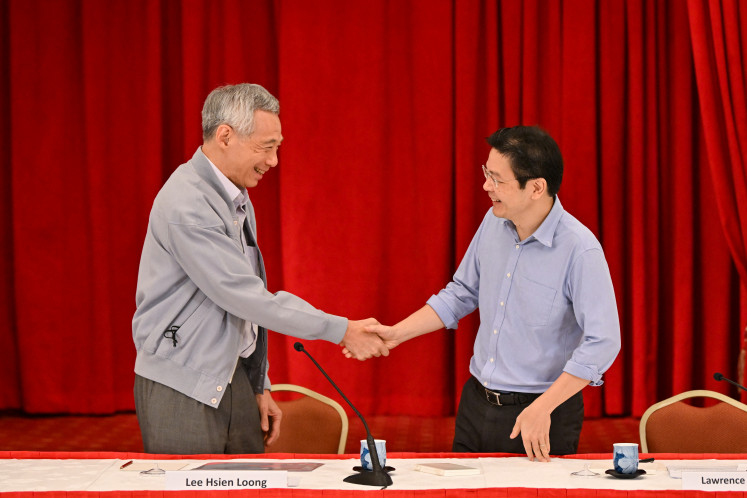History buffs hold tightly onto past, look to future
Remnants of Jakarta’s former plantations, bridges, rivers, springs and other notable historical sites remain in name and memory; however, several locals have expressed concern that this may not be the case within a single generation
Change Size

R
emnants of Jakarta’s former plantations, bridges, rivers, springs and other notable historical sites remain in name and memory; however, several locals have expressed concern that this may not be the case within a single generation.
One obvious place is Kebon Jeruk in West Jakarta, “where you could once find plantations of lime trees, oranges and pomelos”, said Asep Setiawan, 50, a Betawi figure, who became actively involved in researching the city’s roots since 2011.
Kemang in South Jakarta, like many places in the city, was named after a notable type of vegetation that used to be prevalent in that area, in this case a sweet-scented species of mango, Mangifera kemanga. Meanwhile, Karet, also in South Jakarta, was named after Euphorbiaceae, the rubber plant. Many places such as Bintaro of South Jakarta, (named after a type of palm tree), North Jakarta’s Kebon Bawang (named after an onion field) and Sungai Bambu (named after a river lined with bamboo trees), follow this trend.
Other places, however, with seemingly obvious names, could actually mean something else entirely. An example of this mistranslation, Asep said, is Tanah Abang, “which would translate from Javanese to English into ‘red earth’, but that was not the original name”.
Asep explained further: “There are times when it is a mistranslation from a Dutch name, during the time of Batavia. Tanah Abang was named after pohon abang because it used to be a hilly place covered by a type of palm tree that the Dutch called Nabang or De Nabang. The Betawi called the same tree Tenabang, but when it was translated into Javanese, it became Tanah Abang instead because of mispronunciation.”
“Wow, I didn’t know that Tanah Abang was misnamed. Indonesian sure is a fickle language”, said a local resident named Kevin, 27, “Why would you even name something ‘Brother’s Tree’? When you translate it into English, it sounds strange.”
Aside from providing interesting historical tidbits, the names of the locations of what used to be swamps, rivers and other things serve as a reminder of the city’s identity.
“If there is no documentation, or people cease to pass history onto the collective memory of the city’s inhabitants, the story of Jakarta’s past may be completely gone within a generation,” said author G.J. Nawi.
“We want to maintain the collective memory of Jakarta’s inhabitants, maintain the identity of the city with the names of the streets and places [that used to be there],” said Betawi figure Yahya Andi. “Do not forget the environment we built upon, the equilibrium we have to maintain.”
Areas like Kuningan oftentimes have conflicting origin stories, depending on whether you ask experts or locals. According to the research done by betawikita.id, the name Kuningan was derived from the son of a ruler named Syarif Hidayatullah, whose wife, Queen Ong-Thien Nio, a daughter of an emperor from the Ming dynasty, gave birth to a prince she named the “prince of Kuningan”.
However, this goes against what many locals believe, said resident Annisa, 23. “Isn’t it called ‘Kuningan’ because they used to make brass?” she asked. “I’ve never heard the story of a Chinese princess.”
In order to keep track of all the villages, rivers and other places that have changed over time, archaeologist Candrian Attahiyat has been observing the name changes on the basis of the oldest maps of Jakarta and Batavia in existence.
“It is important to know the construction of new settlements for regional expansion,” Candrian said. “For example, if there is a place named after a swamp, certainly in development planning, they should pay attention to these conditions. The building and technology should anticipate the problems of building on a former swamp.” (acr)









